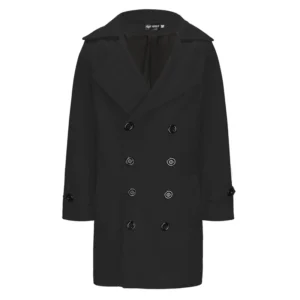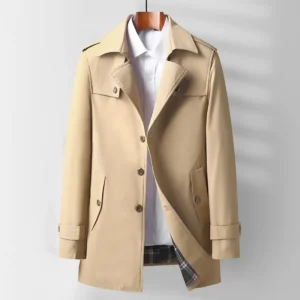The Enduring Legacy of Vintage-Inspired Tweed Coats
Vintage-inspired tweed coats represent more than just outerwear; they embody a rich tradition of craftsmanship that has stood the test of time. These distinctive garments feature telltale markers of heritage design—notched lapels, natural shoulders, ticket pockets, and traditional patterns that harken back to an era when clothing was built to last generations.
Tweed’s journey from the Scottish highlands to modern menswear is a testament to its remarkable versatility and durability. Originally developed as protective clothing for farmers and gamekeepers in the harsh Scottish climate, tweed gradually made its way into the wardrobes of the British aristocracy for country pursuits. This practical fabric—woven from resilient wool with a distinctive textured finish—provided natural water resistance and insulation long before technical fabrics existed.
What distinguishes vintage-inspired men’s tweed coats from their contemporary counterparts is their adherence to traditional construction techniques and design elements. The subtle waist suppression, three-roll-two button stance, functional cuff buttons, and half-belt backs are details that modern designers often simplify or eliminate entirely. These elements weren’t merely decorative—they served practical purposes, from allowing movement when riding horses to providing extra warmth around the kidneys.
The resurgence of interest in tweed coats aligns with a broader return to heritage clothing and sustainable fashion. As consumers become increasingly conscious of fast fashion’s environmental impact, many are rediscovering the value of investing in garments made from natural materials using time-tested methods. Period dramas set in early 20th century Britain have further fueled this renaissance, showcasing the sophisticated yet rugged appeal of traditional tweed outerwear.
Today’s finest tweed coats balance historical authenticity with subtle modern adaptations. While preserving classic elements like natural shoulders and traditional patterns, contemporary versions might feature slightly trimmer cuts or updated fabric blends for lighter weight and greater comfort. This evolution ensures that tweed remains not just a relic of the past but a living tradition that continues to adapt while honoring its roots.
Decoding Tweed Fabric: Understanding the Heritage Material
Authentic tweed begins its life as raw wool, typically from hardy sheep breeds well-adapted to the rugged landscapes of Scotland and Ireland. This wool undergoes a meticulous transformation—it’s cleaned, carded, spun into yarn, and then woven on traditional looms into the distinctive patterns that define tweed. The fabric then receives a gentle finishing process that enhances its natural water-resistant properties while preserving its characteristic texture.
What makes tweed particularly remarkable as an outerwear fabric is its inherent functionality:
- Natural water resistance: The tight weave and lanolin content (natural sheep oils) create a surface that repels light rain and moisture
- Exceptional insulation: The complex weave traps warm air close to the body while allowing excess heat to escape
- Durability: The dense construction resists tearing, abrasion, and pilling
- Breathability: Unlike synthetic materials, tweed allows air circulation to prevent overheating
From a sustainability perspective, tweed stands as an exemplar of environmentally conscious clothing. The wool is a renewable resource, biodegradable at the end of its lifecycle, and the traditional production methods have minimal environmental impact compared to synthetic fabric manufacturing. A quality tweed coat can last decades—even generations—with proper care, making it the antithesis of disposable fashion.
Tweed comes in various weights, traditionally measured in ounces per square yard:
- Lightweight tweed (10-12 oz/280-340g): Suitable for autumn and mild winter days
- Medium-weight tweed (13-15 oz/370-425g): The most versatile, appropriate for standard winter coats
- Heavyweight tweed (16-18+ oz/450-510g+): Designed for the coldest conditions, especially in traditional Ulster coats
Regional variations in tweed production contribute distinct characteristics to the final fabric. Harris Tweed, protected by an Act of Parliament and woven in the Outer Hebrides of Scotland, features wool dyed before spinning, creating its characteristic depth of color. Donegal tweed from Ireland is immediately recognizable by its colorful slubs or flecks interspersed throughout the fabric. Saxony tweed offers a softer hand-feel with its finer wool, while Border tweed tends toward robust durability for country wear.
When selecting a men’s wool coat, understanding these regional distinctions helps you appreciate the specific heritage and performance characteristics you’re investing in. The weather resistance of traditional tweed comes not from chemical treatments but from the natural properties of wool and the dense weaving process—a testament to how ancestral knowledge often outperforms modern shortcuts.
Classic Tweed Patterns: A Visual Guide
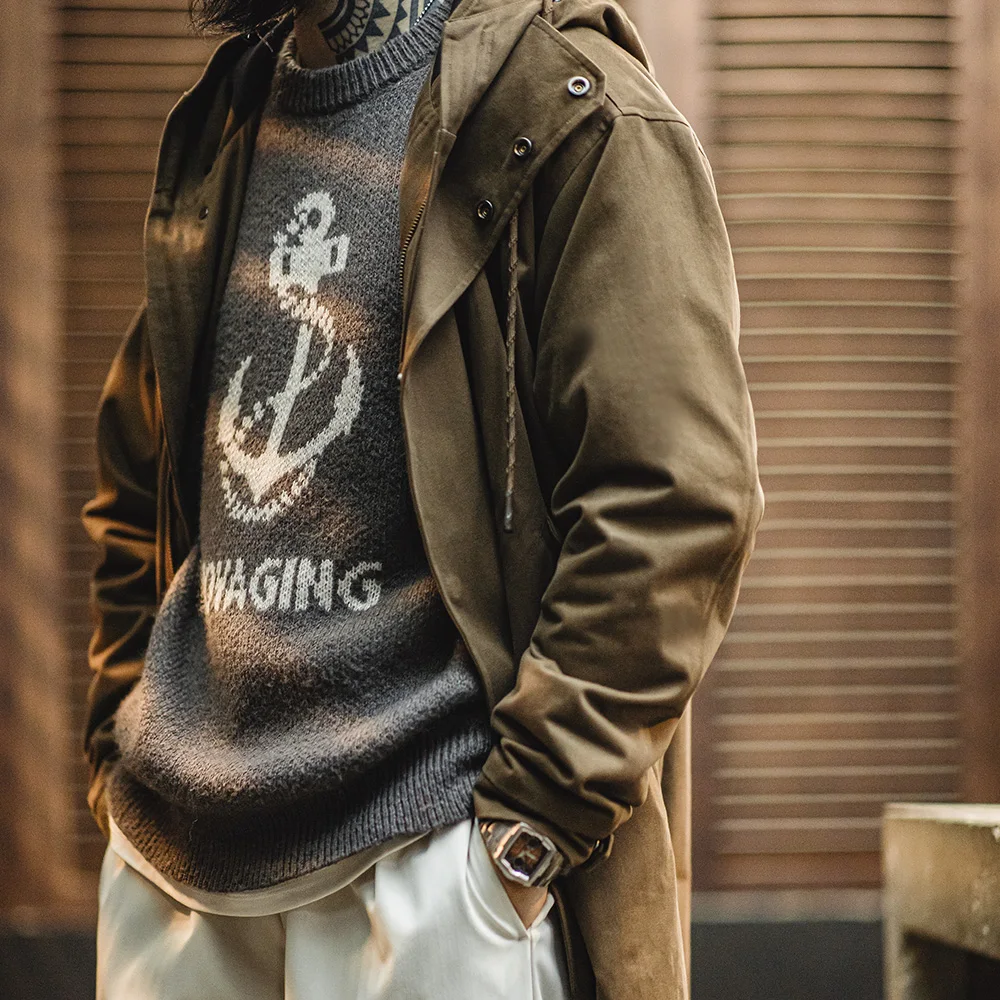
The pattern of a tweed coat isn’t merely decorative—it’s a language unto itself, telling stories of regional heritage, intended use, and social context. Understanding these distinctive patterns helps you select a coat that balances personal style with historical authenticity.
Herringbone
Perhaps the most recognizable of all tweed patterns, herringbone coat designs feature a distinctive V-shaped weave resembling fish bones:
– Characterized by parallel rows of broken zigzag lines
– Creates a subtle texture that adds visual interest without overwhelming
– Particularly flattering on most body types as the vertical pattern creates a lengthening effect
– Traditionally appears in muted greys, browns, and blues
– The most versatile pattern for both formal and casual settings
Donegal
Named after County Donegal in Ireland, this distinctive tweed features:
– A plain or twill background interspersed with small, colorful flecks
– These nepps or slubs were traditionally created using natural dyes from local plants
– Creates visual texture and depth without bold patterning
– Appears slightly more casual than herringbone, making it excellent for weekend wear
– The flecked appearance helps disguise minor stains or wear
Glen Plaid (Prince of Wales)
A sophisticated pattern with aristocratic connections:
– Features alternating bands of small and large checks
– Creates a complex, layered appearance with considerable visual depth
– Traditionally woven in black and white or blue and white combinations
– Makes a stronger statement than herringbone, requiring simpler accompanying garments
– Can visually broaden the torso, making it flattering for slimmer builds
Barleycorn
Named for its resemblance to barley seeds:
– Features small, rounded bumps in the weave creating a three-dimensional texture
– Typically appears in solid colors with textural contrast rather than color variations
– Provides excellent visual interest in monochrome outfits
– Creates a robust, country-inspired appearance suitable for casual settings
– The texture helps mask minor wear and tear over time
Understanding how patterns interact with your body proportions is essential for selecting the most flattering coat. For shorter men, smaller patterns like fine herringbone create a more balanced silhouette, while taller gentlemen can carry larger checks or bolder patterns with ease. The perfect coat length for height works hand-in-hand with pattern selection—larger patterns typically require more fabric space to display their full effect.
When examining tweed patterns, pay attention to the clarity of the weave—premium tweed displays crisp pattern definition with consistent coloration throughout. Traditional color palettes tend toward earth tones and muted hues that reflect the natural dyes historically available, though contemporary interpretations may incorporate more vibrant accents.
Anatomy of a Vintage-Inspired Tweed Coat
Understanding the structural elements of a traditional tweed coat helps you identify quality and authenticity in both vintage pieces and modern reproductions. Each component has evolved through generations of refinement to serve both practical and aesthetic purposes.
Collar Styles
The collar fundamentally defines a coat’s character and historical reference point:
- Ulster collar: A wide, substantial collar designed to be turned up against inclement weather, often paired with a throat latch
- Notched lapel: The classic business coat collar with a distinctive notch where lapel meets collar
- Peak lapel: More formal, with lapels pointing upward toward the shoulders, lending an aristocratic air
- Convertible collar: Can be worn both closed at the neck or folded back, maximizing versatility
Shoulder Construction
Traditional tweed coats feature one of two predominant shoulder styles:
- Natural shoulder: Minimal padding following the wearer’s natural shoulder line, creating a relaxed silhouette typical of British country clothing
- Structured shoulder: Moderate padding creating a slightly more formal, squared appearance often seen in city coats
Sleeve Details
The sleeves of heritage tweed coats often include functional elements:
- Surgeon’s cuffs: Working buttonholes on the cuffs, originally allowing doctors to roll up sleeves while working
- Turnback cuffs: A folded cuff detail that adds visual interest and historical authenticity
- Functional sleeve buttons: Properly spaced and aligned buttons that actually unbutton, a hallmark of quality tailoring
Pocket Styles
Pockets on vintage-inspired tweed coats serve both practical and decorative purposes:
- Patch pockets: Casual, external pockets sewn onto the coat’s exterior, often with flaps
- Ticket pocket: A small additional pocket above the right hip pocket, originally for train tickets
- Slanted hacking pockets: Angled pockets designed for easy access while on horseback
- Bellows pockets: Expandable pockets with pleated sides for carrying game during hunting
Lining Construction
The interior of a quality tweed coat receives as much attention as its exterior:
- Full lining: Complete interior fabric covering, typically in silk, satin, or viscose
- Half lining: Lining covering shoulders and upper back for ease of movement with the front panels lined
- Quarter lining: Minimal lining in just the shoulders and sleeves, allowing the coat to mold to the wearer over time
Understanding proper men’s coat length is essential when evaluating vintage-inspired tweed coats. Traditional lengths vary by style, with country coats typically falling just below the seat and formal town coats extending to the knee. This length affects not only the coat’s appearance but also its warmth, formality, and suitability for different activities.
Distinctive Styles of Vintage-Inspired Tweed Coats
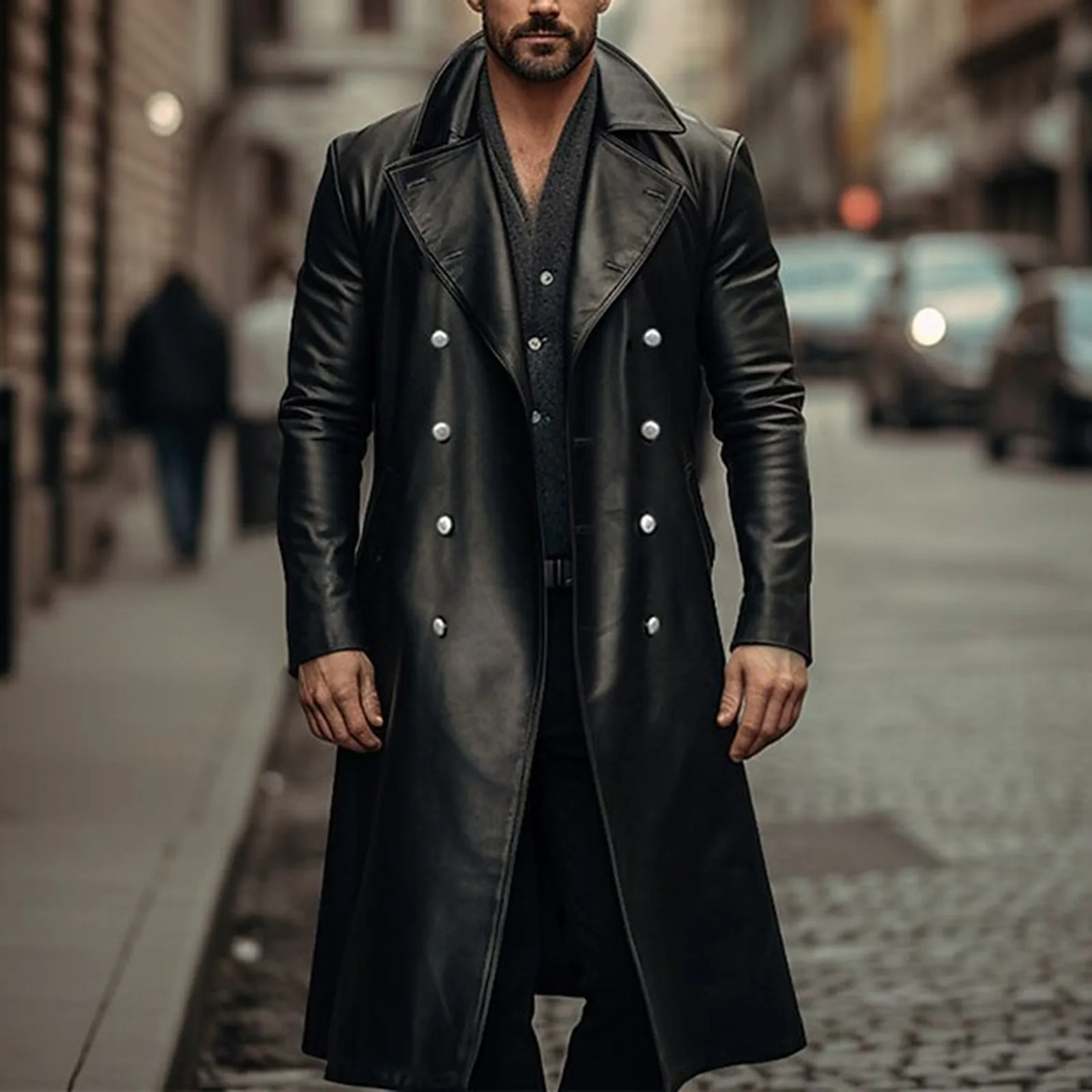
Each tweed coat style carries its own historical narrative, functional design elements, and appropriate settings. Recognizing these distinctive styles helps you select a coat that best suits your lifestyle and personal aesthetic.
The Ulster Coat
The most robust and protective of all tweed coat styles:
– Full-length, typically reaching mid-calf
– Features a distinctive boxier cut allowing for heavy layers underneath
– Defined by its large Ulster collar that can be turned up against the elements
– Often includes a cape detail covering the shoulders and upper back
– Traditionally made from the heaviest tweed weights (16+ oz/450g+)
– Originally designed for traveling in open carriages and automobiles
– Best suited for the coldest weather conditions and country settings
The Chesterfield
The quintessential city coat adapted to tweed:
– Single-breasted design with a clean, tailored silhouette
– Features a fly front covering the buttons for a smooth appearance
– Typically knee-length for formal occasions
– Velvet collar option adds a touch of refinement
– Usually constructed from finer weight tweeds (12-14 oz/340-400g)
– Appropriate for business and formal occasions in cooler weather
The Covert Coat
A hunting-derived style adapted for town wear:
– Three-quarter length, typically ending just below the knee
– Distinguished by rows of visible stitching near the hem and cuffs
– Often features a fly front and notched collar
– Usually made in lighter herringbone or barleycorn patterns
– Balances country heritage with urban sophistication
– Versatile enough for both business and weekend wear
The Raglan Coat
Named for Lord Raglan and designed for ease of movement:
– Distinguished by sleeves that extend to the collar rather than ending at shoulders
– Creates a relaxed silhouette with sloping shoulders
– Often features a Balmacaan-style collar that buttons high at the neck
– Typically mid-thigh to knee length
– The absence of shoulder seams makes it ideal for layering
– Perfect for active weekend wear in rural settings
Choosing between wool overcoat styles requires considering both your practical needs and style preferences. For urban professionals who occasionally venture to the countryside, a Chesterfield or Covert coat in medium-weight tweed offers versatility. Those facing harsh winter conditions might prefer the robust protection of an Ulster coat.
The decision between short vs. long coats significantly impacts a tweed coat’s functionality and formality. Longer styles like the Ulster and Chesterfield offer greater warmth and formality, while shorter versions like hunting jackets provide better mobility for active pursuits. Your height and build should also influence this choice, as coat proportion dramatically affects the overall silhouette.
While these classic styles have remained remarkably consistent over generations, contemporary interpretations might incorporate subtle modern adaptations like trimmer fits, lighter weight fabrics, or technical linings while preserving the essential character that makes each style distinctive.
Quality Indicators: What Makes an Exceptional Tweed Coat
The difference between an ordinary tweed coat and an exceptional one lies in details that may not be immediately obvious. Training your eye to recognize these quality indicators ensures you invest in a garment that will provide decades of service rather than just a few seasons.
Superior Fabric Quality
The foundation of any great tweed coat starts with the fabric itself:
– Exceptional tweed feels substantial yet soft, with a springy resilience when compressed
– The weave should be tight and even, with clearly defined pattern elements
– When held against light, quality tweed shows consistent density without thin spots
– Premium tweed typically weighs between 13-18 oz per square yard (370-510g per square meter)
– Colors should be rich and nuanced, often achieved through using multiple colored yarns
Construction Excellence
Superior craftsmanship manifests in several observable ways:
– Hand-sewn buttonholes with tight, even stitching that follows the fabric’s pattern
– Full canvas construction where the internal structure is stitched rather than glued
– Pattern matching at seams, particularly noticeable at pockets and center back
– Pick stitching (tiny visible stitches) along edges, indicating hand-finishing
– Smooth roll of the lapel from collar to first button, indicating proper canvassing
Lining and Interior Details
The inside of a quality tweed coat receives as much attention as its exterior:
– Silk, cupro or high-quality viscose linings that breathe while providing smooth entry
– Piped internal seams protecting against wear and fraying
– Generous internal pockets, often including a secure wallet pocket
– Sleeve linings constructed to facilitate easy arm movement
– Chain stitching at the collar seam allowing it to sit properly against the neck
Functional Elements
Heritage-inspired details that serve practical purposes indicate thoughtful design:
– Working throat latch to secure the collar in inclement weather
– Functional sleeve buttons (though not essential on every quality coat)
– Double-stitched seams at stress points like armholes and pockets
– Interior wind guards at front closure to prevent drafts
– Properly balanced weight distribution that hangs evenly when unbuttoned
Understanding how proper construction affects appearance is essential—a well-made coat makes you appear taller through correct proportioning and balanced lines. The quality of construction directly impacts how the coat drapes on your frame, how it moves with your body, and ultimately how flattering it appears.
While machine construction has improved dramatically, certain elements still benefit from hand craftsmanship—particularly the canvas installation, collar shaping, and button attachment. The balance between traditional techniques and modern efficiency represents one of the key differentiators in price points among tweed coats.
The Ultimate Buying Guide: Finding Your Perfect Tweed Coat
Finding your ideal tweed coat requires navigating between heritage brands, modern manufacturers, vintage markets, and understanding how to evaluate each option’s merits.
Heritage Brands vs. Modern Manufacturers
Each source for tweed coats offers distinct advantages:
Heritage British and Irish Brands:
– Unmatched authenticity with designs evolved over generations
– Direct relationships with traditional tweed mills
– Exceptional construction with time-tested patterns
– Higher price points reflecting domestic production and traditional techniques
– Often feature exclusive fabric patterns with historical significance
Contemporary Quality Manufacturers:
– Modern interpretations of classic designs with subtle updates for today’s lifestyles
– More accessible price points while maintaining quality construction
– Greater variety of fits, including options for different body types
– Often incorporate performance features like water-resistant treatments
– Typically offer more consistent sizing across products
New Production vs. Vintage
Deciding between newly manufactured and authentic vintage requires considering several factors:
Newly Manufactured Advantages:
– Pristine condition with full expected lifespan
– Modern sizing consistency
– Warranty protection and return options
– Often includes subtle contemporary updates for comfort
– Available in complete size ranges
Authentic Vintage Advantages:
– Character and patina developed over decades
– Often features hand-tailoring difficult to find in modern production
– Unique details and patterns no longer commonly produced
– Potentially better value for exceptional quality
– Sustainable choice that reuses existing garments
Essential Measurements Guide
Understanding proper sizing is crucial when investing in a tweed coat:
| Measurement | How to Measure | Vintage Adjustment |
|---|---|---|
| Chest | Measure around the fullest part of your chest, keeping tape horizontal | Add 2-4 inches (5-10 cm) to your chest measurement |
| Shoulders | Measure from shoulder point to shoulder point across back | Vintage coats often have narrower shoulders |
| Sleeve | From shoulder seam to wrist bone | Vintage sleeves typically run shorter |
| Length | From base of collar to bottom hem | Consider style-appropriate length |
| Waist | Around natural waist where you bend sideways | Vintage cuts often have less waist suppression |
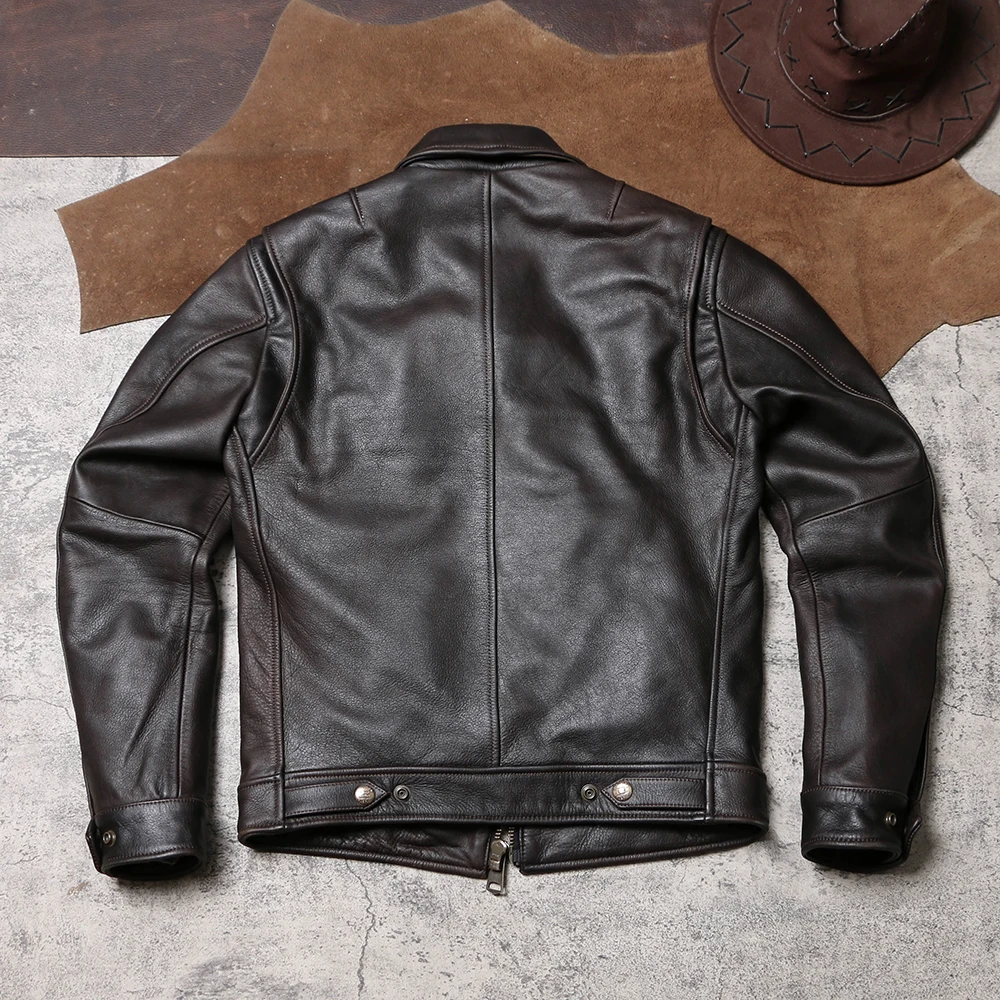
When purchasing tweed coats online, ask these essential questions:
– What is the exact fabric weight in ounces or grams?
– Is the coat fully canvassed, half-canvassed, or fused?
– What is the country of manufacture?
– Are there any fabric composition details beyond “100% wool”?
– What are the specific garment measurements (not just S/M/L sizing)?
Understanding winter coat length requirements for your climate is particularly important with tweed—colder regions demand longer coats with higher collar designs, while more temperate areas might be better served by three-quarter length options.
Price expectations vary significantly based on construction and origin. Entry-level quality tweed coats typically start around $300-400, mid-range options with better construction fall between $600-1200, while premium hand-tailored coats from heritage manufacturers can exceed $2000. When evaluating value, consider construction quality, fabric origin, and craftsmanship details rather than brand name alone.
For the most versatile first purchase, consider a medium-weight herringbone pattern in a neutral shade with classic styling—this combination provides maximum wearability across different settings and seasons while remaining largely immune to trend cycles.
Achieving the Perfect Fit: Tailoring and Alterations
Even the finest tweed coat requires proper fit to look its best. Understanding which alterations are worth pursuing—and which might compromise the garment—helps you achieve the ideal balance between vintage character and personal proportions.
Critical Fit Points
When evaluating fit, pay particular attention to these areas:
– Shoulders should end at or very close to your natural shoulder edge
– Sleeve length should allow ¼ to ½ inch (0.6-1.3 cm) of shirt cuff to show
– Collar should sit flush against your neck without gapping when buttoned
– Coat should close comfortably without pulling at buttons
– When wearing a jacket underneath, there should be no significant restriction in arm movement
Alterations Worth the Investment
Certain modifications preserve the coat’s integrity while improving fit:
– Sleeve shortening or lengthening (within 1 inch/2.5 cm)
– Minor waist suppression to create a more defined silhouette
– Button replacement or repositioning for better closure
– Hem adjustments (within 1-2 inches/2.5-5 cm)
– Pocket flap adjustment or repair
Alterations to Approach with Caution
Some changes may compromise the coat’s structure or proportions:
– Significant shoulder alterations that affect the coat’s entire drape
– Extensive length changes that disrupt the coat’s balanced proportions
– Complete style transformations (converting double-breasted to single-breasted)
– Major pattern realignment at seams
When selecting a tailor for your tweed coat, seek someone with specific experience in heavy outerwear alterations. Unlike suit jackets, tweed coats have unique construction elements that require specialized knowledge to modify correctly.
For shorter men seeking the ideal coat length, proportional balance becomes especially important. The traditional rule suggesting coats end at the mid-thigh may need adjustment—slightly shorter lengths often create more balanced proportions while maintaining the coat’s protective function.
Allow approximately ½ inch (1.3 cm) of room throughout the body for lighter weight tweed coats, increasing to 1 inch (2.5 cm) for heavyweight Ulster-style coats designed to accommodate heavy sweaters or jackets underneath. This layering space ensures comfort without sacrificing the clean lines that distinguish well-tailored outerwear.
Remember that vintage-inspired tweed coats typically feature a slightly roomier cut than contemporary slim-fit designs—this isn’t a flaw but rather reflects their heritage as practical garments designed for movement and layering in colder conditions.
Styling Your Tweed Coat: From Classic to Contemporary
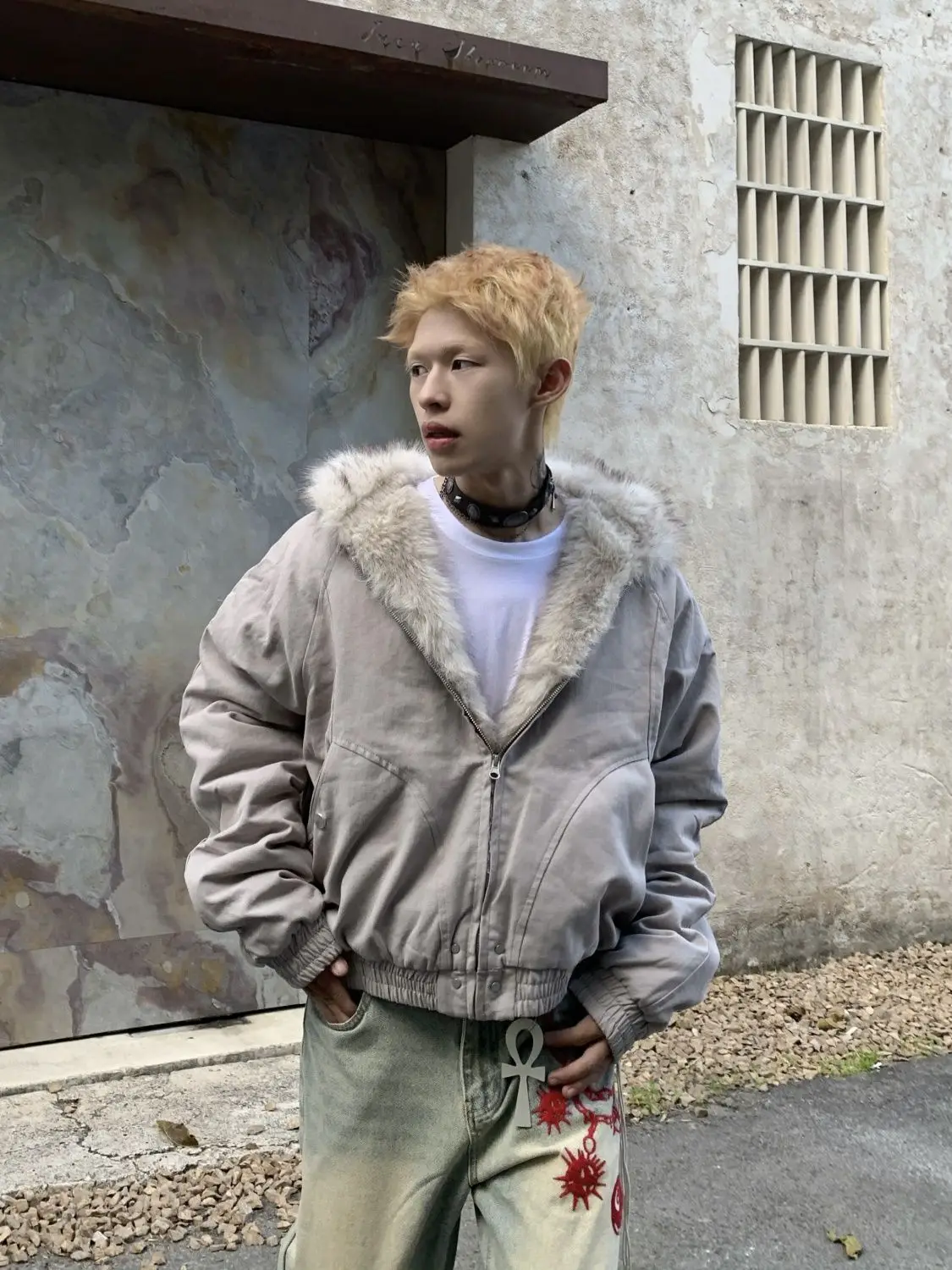
The versatility of tweed coats allows for a remarkable range of styling approaches—from traditionally formal to unexpectedly casual. Mastering these combinations helps you maximize your investment by creating multiple distinct looks with a single quality piece.
Traditional Heritage Styling
For authentic country gentleman aesthetics:
– Pair with a tattersall check shirt and wool tie
– Add a complementary patterned vest/waistcoat for layering
– Complete with moleskin or corduroy trousers
– Finish with leather brogues or sturdy boots
– Accessorize with a flat cap in coordinating tweed
Business-Ready Interpretations
For professional environments:
– Layer over a solid light blue or white shirt and navy or burgundy tie
– Pair with charcoal or navy wool trousers for traditional offices
– Choose dark brown leather Oxford shoes
– Keep accessories minimal and refined
– Select coats with less pronounced patterns for conservative settings
Contemporary Casual Approach
For modern weekend wear:
– Combine with a merino or cashmere turtleneck sweater
– Pair with well-fitted dark jeans or chinos
– Add chelsea boots or quality leather sneakers
– Incorporate unexpected texture through accessories
– Choose brighter accent colors that complement the tweed’s palette
Seasonal Adaptations
Transitioning your tweed coat between seasons:
– Early fall: Layer over lightweight merino sweaters with open collar shirts
– Deep winter: Add scarves, heavier sweaters, and possibly a vest underneath
– Early spring: Lighten combinations with brighter shirts and lighter trousers
– Consider how coat length affects style for each season—longer coats provide more warmth but shorter coats offer greater versatility across seasons
Color coordination with tweed requires understanding the fabric’s complexity. Most tweed contains multiple yarn colors creating its distinctive appearance. Select companion pieces that pick up these underlying hues—a brown herringbone tweed might contain flecks of rust, olive, and gold, all of which become excellent accent color options.
The enduring appeal of herringbone coat patterns stems partly from their remarkable versatility. This classic pattern provides a neutral foundation that works equally well with solid colors, subtle patterns, and even bolder accessories. The visual texture creates interest without overwhelming other elements of your outfit.
For modern interpretations, consider playing with high-low combinations—pairing your heritage tweed coat with contemporary pieces like knit sweaters, minimalist accessories, or sleeker footwear. These juxtapositions highlight the coat’s timeless quality while firmly anchoring your look in the present.
Essential Accessories to Complement Your Tweed Coat
The right accessories enhance both the functionality and aesthetic appeal of your tweed coat, completing the look while honoring its heritage character. Strategic accessory selection helps transition your coat between different settings and occasions.
Traditional Companions
Heritage accessories that naturally complement tweed:
– Flat caps or baker boy caps in coordinating tweed or solid wool
– Cashmere scarves in complementary solid colors
– Leather gloves in rich brown or tan
– Wool tartan or solid knit ties
– Pocket squares in ancient madder prints or paisley patterns
– Wooden-handled umbrellas with solid canopies
Contemporary Additions
Modern accessories that create fresh interpretations:
– Knitted beanies in contrasting bright colors
– Oversized scarves with geometric patterns
– Leather portfolios or document holders
– Minimalist watches with leather straps
– Subtle lapel pins or collar bars
– Merino or cashmere neck gaiters instead of traditional scarves
Material Harmonies
Certain materials naturally complement tweed’s texture:
– Full-grain leather goods that develop patina over time
– Heavy gauge knitted wool accessories
– Waxed cotton bags and accessories
– Brushed cotton or flannel secondary layers
– Natural horn or mother-of-pearl buttons and accessories
When selecting accessories, consider how your body type influences proportion. The perfect coat length for every body type extends to accessories as well—shorter individuals benefit from proportionally scaled accessories, while taller men can carry larger scarves, wider ties, and more substantial hats without being overwhelmed.
Seasonal adjustments help maximize your coat’s versatility:
– Fall: Lighter weight scarves in warmer tones
– Winter: Heavy knit accessories with functional focus
– Early Spring: Introduce lighter colors while maintaining warmth
– Consider how accessories can compensate for seasonal needs—adding a substantial scarf and gloves can extend a lighter weight tweed coat into colder conditions
Functional accessories deserve special consideration with tweed coats. Traditional designs often incorporate features like throat latches and ticket pockets specifically intended for practical accessories. A quality leather card case slips perfectly into a ticket pocket, while gloves can be secured through a sleeve cuff buttonhole when not in use—small details that honor the coat’s functional heritage.
Proper Care and Maintenance for Longevity
With appropriate care, a quality tweed coat can last decades or even generations. Understanding proper maintenance techniques protects your investment while preserving the fabric’s distinctive character.
Routine Cleaning
Regular maintenance prevents dirt accumulation and extends time between professional cleanings:
– Brush your tweed coat after each wearing with a soft-bristled clothes brush
– Brush in the direction of the fabric nap using gentle, straight strokes
– Allow your coat to air thoroughly between wearings (at least 24 hours)
– Spot clean small stains immediately using a damp cloth with minimal rubbing
– For food spills, gently lift solid matter with a blunt edge before treating
Professional Cleaning Considerations
When professional cleaning becomes necessary:
– Seek cleaners with specific experience handling wool tweed
– Request dry cleaning with gentle solvents appropriate for natural fibers
– Clean only when truly necessary—typically once per season or less
– Avoid chemical water-repellent treatments that can damage natural fibers
– Consider professional pressing rather than full cleaning when appropriate
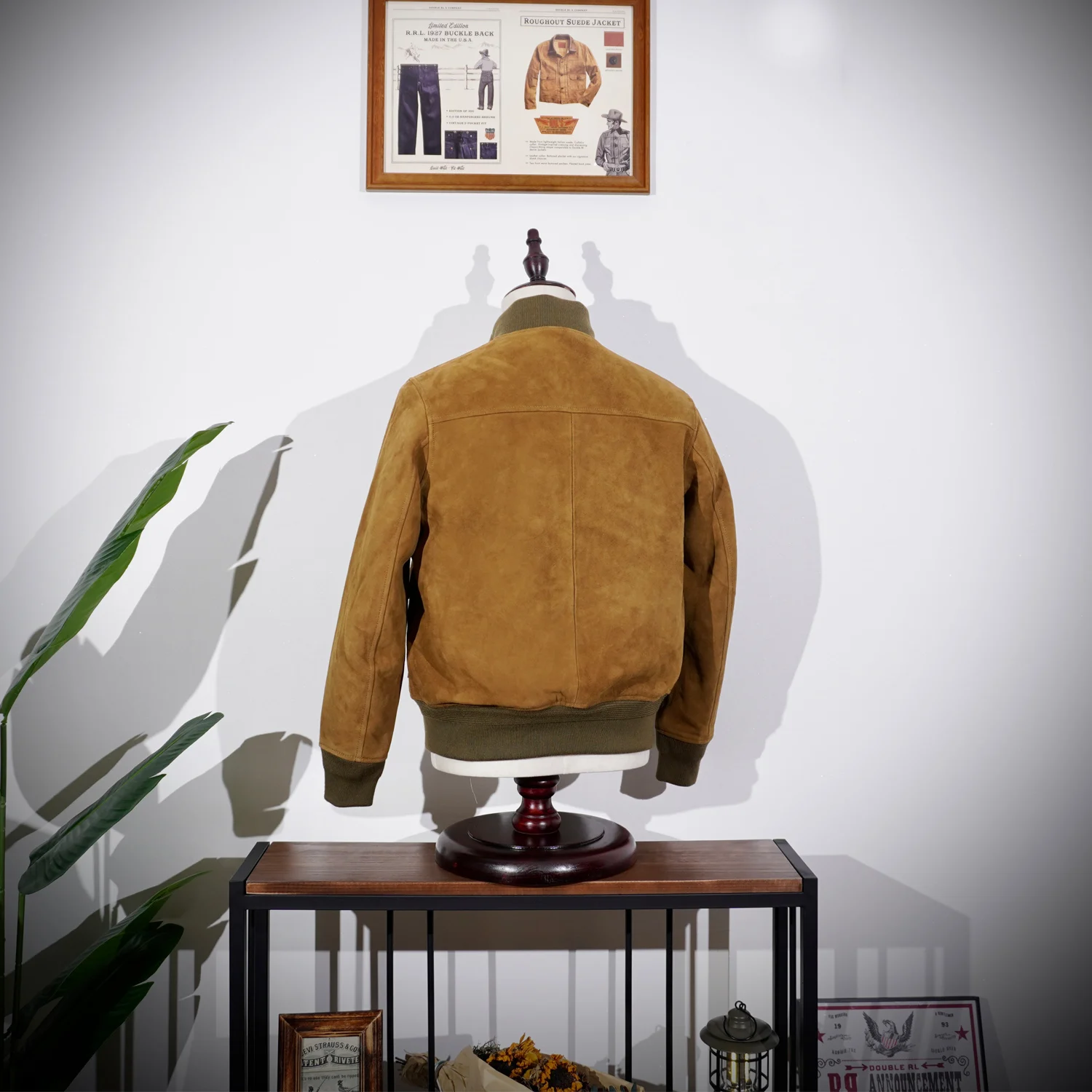
Proper Storage
Seasonal storage methods protect against damage and pests:
– Always clean your coat before extended storage
– Use wide, shaped wooden hangers that support the shoulders
– Allow ample space between garments in your closet
– Place cedar blocks or lavender sachets nearby as natural moth deterrents
– Store in breathable garment bags—never in plastic which traps moisture
– For off-season storage, fold heavy coats with tissue paper along folds
Common Issue Prevention
Addressing potential problems before they develop:
– Reinforce buttons before they loosen using matching thread
– Apply leather patches to elbows at first signs of wear (ideally preventatively)
– Treat minor tears or loose threads immediately to prevent expansion
– Rotate your coat with others to prevent uneven wear patterns
– Keep moths at bay with regular cleaning and natural repellents
For wet weather exposure, remember that traditional tweed has natural water-resistant properties—light rain will typically bead on the surface. After exposure to moisture, hang your coat in a well-ventilated area away from direct heat sources until completely dry before brushing. This maintains the natural lanolin content that contributes to tweed’s weather resistance.
Mens Double Breasted Pea Coat, Mens Wool Blend Coat, Mens Wool Pea Coat
Price range: $136.84 through $157.36 Select options This product has multiple variants. The options may be chosen on the product pageMens Cashmere Overcoat, Mens Hooded Winter Coat, Mens Wool Blend Coat
Price range: $128.72 through $139.68 Select options This product has multiple variants. The options may be chosen on the product pageMens Black Overcoat, Mens Black Wool Coat, Mens Wool Overcoat
$339.18 Select options This product has multiple variants. The options may be chosen on the product pageMens Grey Overcoat, Mens Wool Blend Coat, Mens Wool Overcoat
$201.28 Select options This product has multiple variants. The options may be chosen on the product pageMens Herringbone Coat, Mens Long Overcoat, Mens Wool Overcoat
Price range: $197.16 through $203.69 Select options This product has multiple variants. The options may be chosen on the product pageMens Long Overcoat, Mens Topcoats
Price range: $189.40 through $196.88 Select options This product has multiple variants. The options may be chosen on the product page
Why Invest in a Vintage-Inspired Tweed Coat?
The decision to purchase a quality tweed coat represents more than just acquiring outerwear—it’s an investment in heritage, craftsmanship, and sustainable style that transcends fast-fashion cycles.
The remarkable durability of well-made tweed coats makes them true investment pieces. While the initial cost may exceed that of mass-produced alternatives, the cost-per-wear calculation dramatically favors tweed when considered over its potential decades of service. Many family heirloom tweed coats have already provided 30+ years of wear and remain fully functional and stylish.
From a sustainability perspective, tweed coats represent responsible consumption in multiple ways:
– Natural, biodegradable wool fiber with minimal processing
– Traditional production methods with low environmental impact
– Exceptional durability reducing replacement frequency
– Timeless styling that resists trend obsolescence
– Repairable construction that extends usable lifespan indefinitely
The versatility of tweed spans an impressive range of settings and occasions. A thoughtfully selected coat transitions seamlessly from country walks to city meetings, weekend social events to professional settings. This adaptability makes tweed particularly valuable for travelers seeking to pack efficiently without sacrificing style or preparedness.
When considering the definitive guide to full coat length, tweed offers options from hip-length sporting jackets to knee-length Ulster coats, each providing different levels of protection and formality. This range ensures you can select precisely the right garment for your lifestyle needs.
Perhaps most importantly, a vintage-inspired tweed coat connects you to a rich heritage of functional design evolved over centuries. Each element—from throat latches to ticket pockets, action backs to reinforced elbows—represents solutions to practical problems refined over generations. This connection to craftsmanship history provides a depth of appreciation that mass-produced fashion cannot match.
In an age of disposable consumption, investing in a Metro Cloak tweed coat represents a counterpoint—a return to valuing longevity, quality materials, and timeless design over momentary trends. This philosophy applies not just to your wardrobe but potentially to your broader consumption habits.
Can Tweed Coats Work in Warmer Climates?
Contrary to common perception, tweed coats aren’t exclusively reserved for frigid conditions. With appropriate selection and styling, these versatile garments can serve comfortably in a variety of climates beyond their Scottish highland origins.
For moderate climates, consider these adaptations:
– Seek lighter weight tweeds (10-12 oz/280-340g per square yard)
– Choose looser weaves that provide better breathability
– Select quarter or half-lined coats rather than fully lined options
– Opt for lighter base colors that absorb less solar heat
– Consider shorter coat lengths that provide less overall coverage
The natural properties of wool make tweed surprisingly adaptable to temperature fluctuations. Wool’s hygroscopic fibers actively manage moisture by absorbing up to 30% of their weight in water vapor without feeling damp. This remarkable attribute helps regulate body temperature across varying conditions—cooling through evaporation when warm and insulating when cool.
For transitional seasons like fall and spring, tweed coats offer significant advantages over synthetic alternatives:
– Natural breathability prevents overheating as temperatures fluctuate
– The substantial fabric blocks wind effectively during cooler mornings and evenings
– Layering flexibility allows adaptation throughout the day
– The natural water resistance handles light spring showers without additional treatment
Styling for warmer conditions requires thoughtful layering:
– Pair with lightweight cotton or linen shirts rather than heavy flannel
– Skip the sweater layer typically associated with tweed
– Leave the coat unbuttoned when indoors or during warmer portions of the day
– Consider rolling the sleeves slightly when appropriate for casual settings
– Select lighter colored accessories that reflect rather than absorb heat
While the heaviest Ulster-style tweed coats remain best suited to genuinely cold conditions, the versatility of lighter weight options extends their usability across a much broader climate range than commonly assumed.
Are Vintage Tweed Coats Different from Modern Reproductions?
Distinguishing between authentic vintage tweed coats and contemporary reproductions reveals fascinating differences in construction techniques, materials, and design philosophy that help inform purchasing decisions.
Construction Differences
Vintage originals typically feature:
– More extensive hand-stitching, particularly visible in buttonholes and lapels
– Heavier canvas materials creating a more substantial structure
– Chain-stitched collar attachments for durability
– Reinforced stress points with additional backing materials
– Often include spare buttons and fabric swatches for repairs
Modern reproductions typically offer:
– Machine-finished elements with selected hand detailing at visible points
– Lighter weight canvassing or partial canvassing for comfort
– More consistent stitching with higher stitch counts
– Fused elements in less visible areas for cost efficiency
– Standardized sizing with more predictable fit across sizes
Fabric Considerations
The materials themselves often differ significantly:
– Vintage tweeds typically feature higher wool content with less uniform texture
– Modern wool blend coats may incorporate small percentages of synthetic fibers for durability or cashmere for softness
– Older tweeds often have higher lanolin content creating natural water resistance
– Contemporary tweeds frequently feature softer finishes for immediate comfort
– Vintage pieces show natural variation in dyeing and yarn thickness
Silhouette and Fit Variations
The overall shape and fit philosophy has evolved:
– Vintage coats typically feature roomier cuts designed for layering
– Sleeve lengths in older garments tend to be slightly shorter
– Shoulder width was generally more generous in vintage pieces
– Modern reproductions often incorporate subtle waist suppression
– Contemporary coats frequently feature slimmer sleeves and armholes
For most wearers, the ideal choice depends on personal priorities. Those valuing absolute authenticity and the patina of age may prefer vintage originals despite potential sizing challenges and wear. Others seeking the vintage aesthetic with modern consistency and unworn condition will find contemporary reproductions more practical.
Quality modern reproductions offer several practical advantages—pristine condition, more available sizes, and often superior fabric selection given advances in wool processing. Meanwhile, vintage originals provide unmatched character, potentially superior hand-tailoring, and the satisfaction of preserving historical garments.
How to Identify Quality Tweed at a Glance?
Developing the ability to quickly assess tweed quality saves time when shopping and ensures you invest in garments worthy of their price. These simple evaluations can be performed in minutes, even in retail environments.
The Touch Test
Quality tweed reveals itself immediately through tactile assessment:
– Premium tweed feels substantial with a pleasant weight when held
– The fabric should spring back immediately when squeezed rather than remaining compressed
– Run your hand against the nap—quality tweed offers gentle resistance without feeling rough
– Edges shouldn’t feel overly stiff or artificially treated
– The wool should feel dry and clean rather than greasy or overly soft
Visual Inspection
Key quality indicators are visible upon careful examination:
– Look for clear definition between colors in the pattern
– Check for consistency in the weave without obvious flaws or irregularities
– Examine pattern matching at seams—particularly at the back center seam
– Assess color richness and depth, which indicates quality dyeing processes
– Look for the subtle variation in yarn thickness that indicates natural wool
Quick Construction Assessment
Even without technical knowledge, these indicators reveal quality:
– Test buttons for secure attachment—quality coats feature reinforced button attachment
– Examine stitching for consistency and appropriate density
– Check inside pockets for neat finishing and sturdy attachment
– Inspect the collar roll for smooth, elegant curvature without bubbling
– Assess lining attachment for smooth integration without puckering
When shopping online, look for these descriptive indicators:
– Specific weight measurements in ounces or grams per yard/meter
– Named fabric mills or regional tweed designations (Harris, Donegal, etc.)
– Detailed construction descriptions mentioning canvassing methods
– Close-up photography showing weave detail and texture
– Information about the coat’s country of manufacture
Red flags that suggest inferior quality include:
– Excessive sheen on the fabric surface, indicating potential synthetic content
– Unnaturally even coloration without the depth of proper wool dyeing
– Stiff, board-like hand feel suggesting fused construction throughout
– Machine-made buttonholes with uneven or sparse stitching
– Simplified interior construction with minimal finishing details
Developing this assessment ability helps you confidently navigate both vintage markets and contemporary offerings, ensuring your investment goes toward truly exceptional garments that will provide decades of service rather than just a few seasons.


